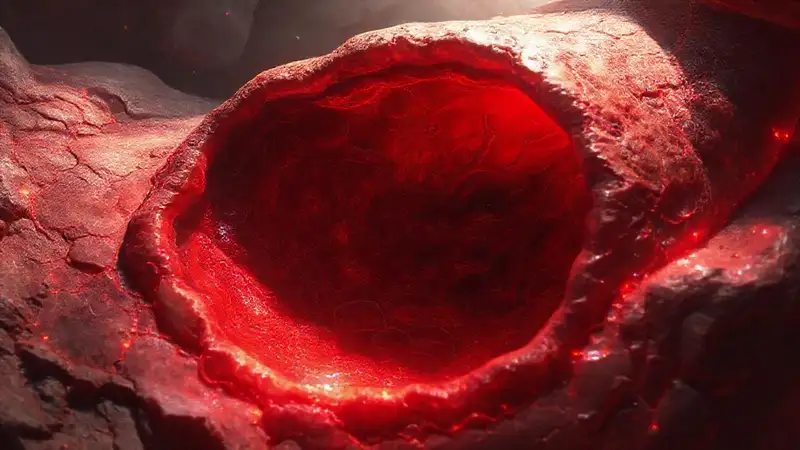Understanding metabolism in extinct animals like dinosaurs is a complex and ongoing challenge. Traditional paleontology focused primarily on skeletal remains and fossil evidence of size and locomotion. However, recent advances in paleothermometry – using isotope analysis of bone and teeth – are revealing surprising insights into how these massive creatures actually functioned. These techniques suggest that dinosaurs, particularly the larger theropods, had significantly higher metabolic rates than previously imagined, generating considerable heat. The question of how they managed to dissipate this heat and maintain their body temperatures becomes increasingly pertinent, especially considering potential environmental stressors.
This research has highlighted a critical area of concern: the potential impact of pathogens. The discovery of fossilized fungal hyphae within dinosaur bones indicates the prevalence of fungal infections in the Mesozoic. Considering the energetic demands of a large dinosaur, and the potential role of these infections in disrupting metabolic processes, we must examine whether fungal infections could have affected the dinosaur’s metabolic heat output, significantly altering their physiology and potentially impacting their survival.
- Thermoregulatory Mechanisms in Dinosaurs
- Isotope Analysis and Metabolic Rates
- The Role of Fungal Infections - A Potential Disruptor
- Implications for Survival and Dinosaur Evolution
- Conclusion
- Further research focused on understanding the specific metabolic pathways disrupted by fungal infections, and the evolutionary pressures that shaped dinosaur thermoregulatory mechanisms, is crucial. This interdisciplinary approach – combining paleontology, microbiology, and physiology – is key to unlocking the secrets of these magnificent extinct creatures and appreciating the complex interplay of factors that determined their fate.
Thermoregulatory Mechanisms in Dinosaurs
The sheer size of many dinosaur species presented a significant thermoregulatory challenge. Maintaining a stable body temperature requires a considerable amount of energy expenditure, particularly in active animals. Early estimations based solely on body mass suggested that dinosaurs, especially theropods, were endothermic – essentially “warm-blooded” – despite their enormous size. However, more refined analyses now lean toward a more complex scenario, potentially involving regional endothermy coupled with periods of facultative ectothermy (becoming reliant on external heat sources).
Several lines of evidence support this nuanced view. Bone histology reveals patterns of vascularization that suggest localized warming of muscle tissue – indicating the potential for targeted heat generation. Furthermore, the presence of feathery structures (proto-feathers) in some dinosaurs strongly suggests an evolved mechanism for radiating heat away from the body surface. The arrangement and density of these structures would have significantly impacted their radiating efficiency, presenting a crucial factor in maintaining homeostasis. It's hypothesized that dinosaurs utilized behaviors like basking and mud-bathing to supplement their internal heat production.
Ultimately, dinosaur thermoregulation wasn’t simply a “turn it on or off” process. It likely involved a dynamic interplay between internal heat generation, external heat sources, and sophisticated surface adaptations. The evidence suggests that dinosaurs were likely capable of manipulating their metabolic rate and their environmental interactions to actively manage their temperature.
Isotope Analysis and Metabolic Rates
Isotope analysis, particularly of oxygen and carbon isotopes found in dinosaur bone and teeth, provides a powerful tool for estimating metabolic rates. The ratio of carbon-13 to carbon-12 (δ13C) is particularly sensitive to the type of food consumed and the efficiency of the animal’s digestive system. Higher δ13C values typically indicate a diet richer in C3 plants (like ferns and conifers), while lower values suggest a reliance on C4 plants (like grasses) or more efficient meat consumption.
These isotopic ratios are then correlated with estimated metabolic rates using models that account for growth rate and body size. Studies on Tyrannosaurus rex, for instance, have consistently revealed exceptionally high metabolic rates – far exceeding those of any modern animal of comparable size. This suggests a diet high in protein and relatively low in fiber, demanding a significant level of energy expenditure. Further complicating the picture is the possibility of isotopic “mixing” – the incorporation of isotopes from multiple food sources – potentially skewing the accuracy of the estimations.
However, despite these challenges, isotope analysis remains the most reliable method currently available for quantifying dinosaur metabolic rates. Continued refinement of these models and the application of new analytical techniques promise to provide even more precise estimates of dinosaur energy budgets.
The Role of Fungal Infections - A Potential Disruptor

The presence of fossilized fungal hyphae within dinosaur bones raises serious questions about the potential impact of these infections on metabolic processes. Fungi are known to thrive in environments with significant nutrient availability, often leveraging host immune responses to gain access to resources. In a large animal with a complex immune system, a severe fungal infection could have diverted significant energy towards fighting the infection.
This energy diversion would have directly impacted the animal’s metabolic rate, potentially reducing the energy available for other vital functions like growth, reproduction, and locomotion. Furthermore, fungal infections can disrupt tissue homeostasis, leading to inflammation and cellular damage, both of which are energetically demanding processes. The sheer scale of a dinosaur’s inflammation – a significant immunological response – could have generated a substantial amount of metabolic heat, further exacerbating thermoregulatory challenges.
It’s also worth considering that some fungal species produce mycotoxins – poisonous compounds – which could have directly interfered with metabolic pathways, further disrupting energy utilization. While the precise mechanisms remain largely unknown, the presence of fungal hyphae clearly indicates that dinosaur health and physiology were frequently compromised by pathogens.
Implications for Survival and Dinosaur Evolution
Ultimately, a higher metabolic rate and the potential for disruption by fungal infections have significant implications for dinosaur evolution. Maintaining such a demanding metabolic system required a robust and efficient digestive system, coupled with highly effective thermoregulatory mechanisms. The prevalence of fungal infections suggests that dinosaurs were constantly battling these pathogens, potentially leading to selective pressures favoring individuals with stronger immune defenses.
The capacity to regulate their metabolic rate – whether through behavioral modifications or physiological adaptations – likely played a crucial role in dinosaur success. Reduced metabolic efficiency due to infection could have limited their ability to compete for resources or avoid predators. Understanding the interplay between these factors – metabolic rate, thermoregulation, and pathogen susceptibility – is essential for constructing a more comprehensive picture of dinosaur physiology and their eventual extinction.
Conclusion
The growing body of evidence from paleothermometry and fossil analyses reveals that dinosaurs possessed surprisingly high metabolic rates, far surpassing those of many modern animals. However, these high metabolic demands were likely coupled with significant challenges, particularly regarding thermoregulation and the risk of infection. The discovery of fungal hyphae within dinosaur bones highlights the potential for these pathogens to have significantly impacted dinosaur physiology.
Further research focused on understanding the specific metabolic pathways disrupted by fungal infections, and the evolutionary pressures that shaped dinosaur thermoregulatory mechanisms, is crucial. This interdisciplinary approach – combining paleontology, microbiology, and physiology – is key to unlocking the secrets of these magnificent extinct creatures and appreciating the complex interplay of factors that determined their fate.
Would you like me to refine any specific aspect of this draft, such as adding more detail to a particular section or adjusting the tone?
 Could soil erosion affect dinosaur food sources
Could soil erosion affect dinosaur food sources How did nutrient cycling affect plant productivity
How did nutrient cycling affect plant productivity How did tundra expansion impact herbivore populations
How did tundra expansion impact herbivore populations Could dinosaur blood composition affect heat transport
Could dinosaur blood composition affect heat transport Could dinosaurs exhibit behavioral thermoregulation
Could dinosaurs exhibit behavioral thermoregulation Could age influence metabolic rate significantly
Could age influence metabolic rate significantly
Deja una respuesta